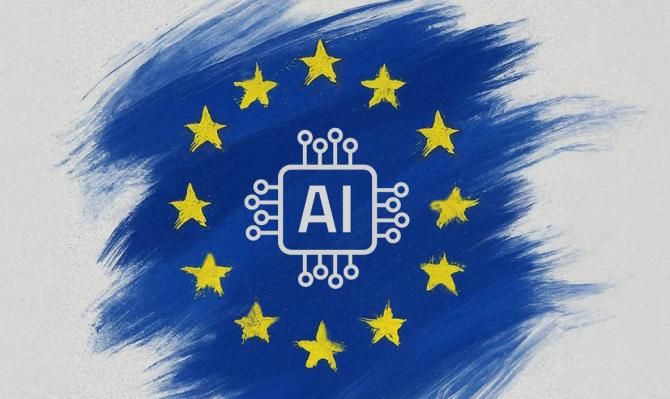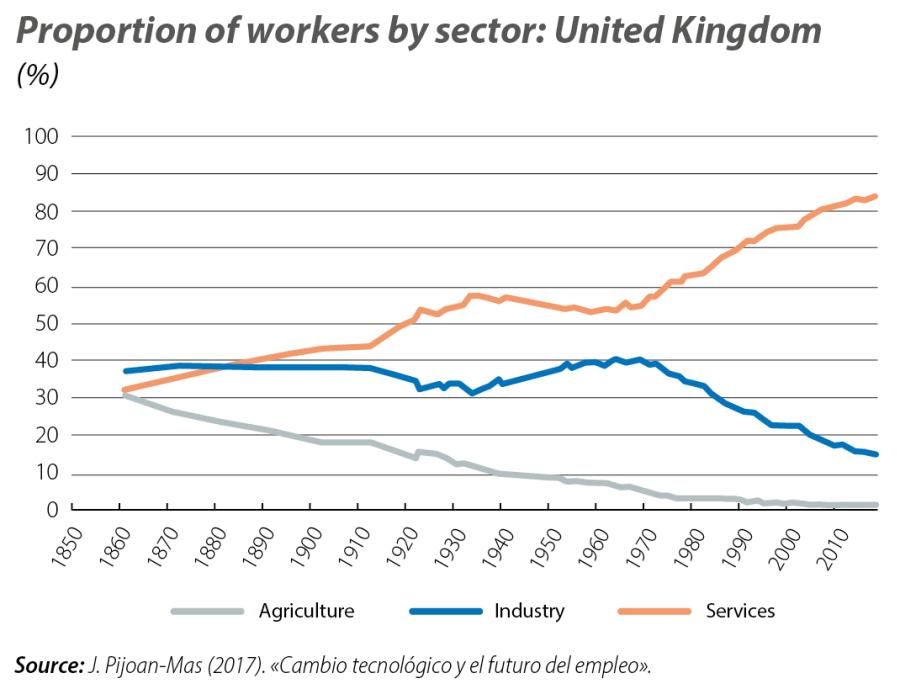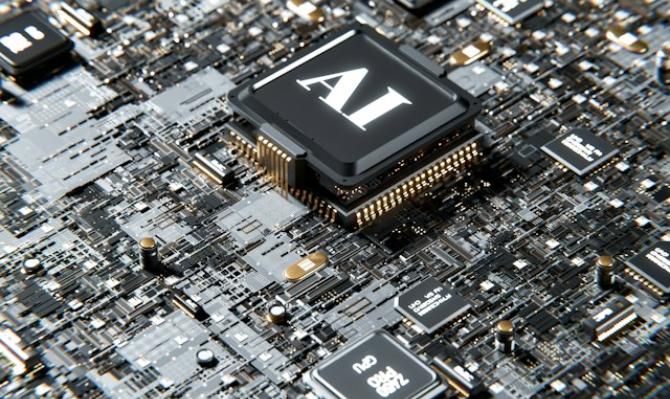Artificial intelligence: challenges and opportunities for Europe
Generative artificial intelligence (AI) is one of the most disruptive and promising technologies of our time. Its ability to create, imitate and improve content of all kinds makes it a general purpose technology with a potential for economic and social transformation comparable to that of electricity or computer science. Its potential impact and how to use it in the best possible way – a major challenge for Europe and for the whole world – is what we will discuss in this article.

Generative artificial intelligence (AI) is one of the most disruptive and promising technologies of our time. Its ability to create, imitate and improve content of all kinds makes it a general purpose technology (GPT) with a potential for economic and social transformation comparable to that of electricity or computer science. Its potential impact and how to use it in the best possible way – a major challenge for Europe and for the whole world – is what we will discuss in this article.
The transformative capacity of a GPT derives from its multi-purpose nature and its impact on a wide range of tasks in many different sectors and activities, as well as its potential for continuous growth and to facilitate the development of other technologies and processes. AI, moreover, has the peculiarity of being a very accessible and adaptable GPT, since using it does not require a great deal of knowledge and the infrastructure that it requires already exists (at least in developed countries). Thus, while in pre-ChatGPT Europe only 10% of companies used AI, it is expected that this percentage will increase dramatically in the coming years (the goal is to reach 75% by 2030, according to the European Digital Strategy). This implies that AI’s impact on productivity could materialise within a much shorter time frame than what has been experienced on previous occasions, that is, in the space of years rather than decades.
What do we know right now about the impact of AI? The first empirical studies available have a microeconomic spectrum and refer to specific occupations, but they already show that AI has a very high potential to increase worker productivity. For example, in a controlled experiment, it is found that the time spent performing a task that involves writing a text decreases by about 40% in workers who used ChatGPT.1 It has also been estimated that the productivity of a contact centre, measured by the number of problems resolved per hour, increased by 14% thanks to the impact of AI on less experienced workers, although the impact was not significant in the case of more experienced workers.2 One conclusion that emerges from these studies, therefore, is that productivity improvements are greater for workers who start with a lower level of productivity, because AI enhances their skills and allows them to traverse the learning curve more quickly.
Beyond these initial results, the impact of AI on the labour market is still uncertain. On the one hand, we must take account of the effect on existing occupations, which will depend in each case on: (i) the degree of overlap between the capabilities of AI applications and the tasks performed by the worker, and (ii) the degree of protection of the workplace (due to technical, legal, or ethical reasons, etc.). Thus, we can distinguish between three types of occupations:
1. High exposure, high protection. The technical potential of AI is high, but so is the degree of protection of the workplace. In these cases, AI will tend to enhance workers’ skills. Example: judges, doctors, etc.
2. High exposure, low protection. High technical potential of AI and low level of protection. In these cases, although AI could enhance workers’ skills, it could also replace them. Example: telephone operators.
3. Low exposure, low technical potential of AI. These occupations would not be widely affected by AI. Example: artists and show workers.
According to an IMF study,3 in advanced economies, which naturally include those of Europe, the first two categories account for 60% of current employment, spread approximately equally between them. This percentage is lower in emerging economies, where the figure is less than 40%. Due to the multi-purpose nature of AI, it is estimated that the potentially substitutable occupations are both skilled and unskilled in nature and that workers at all income levels will be affected. In contrast, occupations with low substitutability tend to be concentrated at high income levels.
In any case, it is difficult to anticipate precisely what the effect on employment may be in a given occupation. In occupations with high exposure to AI and high protection, increasing the productivity of these workers would decrease the number of employees required for a certain level of production. However, if the demand for the goods or services produced by these types of workers increases sufficiently, then the number of people employed in these categories may increase (demand should rise, because the cost of these goods and services would fall thanks to the increase in productivity). For instance, will the number of surgeons increase if they become more productive with AI? It would not be necessary to perform the same number of interventions, but it would no doubt increase the demand for interventions (some that are currently on a waiting list, due to unsatisfied demand because they are currently too expensive, such as cosmetic surgeries; others because advances in AI will allow more pathologies to become «operable», etc.). Depending on which effect prevails, there will be either a decrease or an increase in the number of surgeons.
The same effects, albeit with varying intensity, are at play in high-exposure and low-protection occupations. Will the number of employees working in contact centres decline? Although in theory we could assume so, if much of this work can be done by AI, some companies may also choose to hire more people to carry out these tasks, since they can be much more productive with the help of AI. After all, it will depend on whether the company uses AI basically to replace what a human has been doing or whether it uses it to expand and improve the service. In this latter case, it could even lead to an increase in the number of workers offering customer service remotely.
In addition, we must take into account new occupations that will arise as a result of AI, such as that of prompt engineer, algorithm auditor, experts in AI-related legal regulation or ethics, etc.
Ultimately, the aggregate impact of AI will depend on (i) the balance between jobs that are supplemented by AI versus those that are replaced; (ii) the aggregate productivity gains, which will drive income levels and, with it, a general increase in demand for goods and services which will require workers, and (iii) the new occupations that arise as a result of AI, either directly or due to the emergence of new products, services or business models.
Although this time may be different, the impact that disruptive technological changes have had on the labour market in the past, such as the Industrial Revolution in the 19th century or the introduction of computers 40 years ago, can offer some clues. Notably, despite the rapid technological change of the last 150 years, the employment rate has not changed significantly in developed economies. Generally speaking, employment has shifted from more automated sectors to new sectors created by technology and those that are less automated. In the Industrial Revolution, for example, a lot of employment was destroyed in agriculture, but a great deal was created in industry, as the chart shows. One of the most powerful lessons we can learn from processes of technological change is that the dissemination throughout society of the opportunities generated by technical progress depends on the institutions. If they are flexible and dynamic, they will facilitate the emergence of new sectors and occupations that take full advantage of the new technology and cushion the negative effects on the most exposed occupations.
- 3. See IMF, 2024, «Gen-AI: Artificial Intelligence and the Future of Work».

The challenges for economic policy and institutions in general are vast, covering areas ranging from education (what kind of training do we need to prepare for the AI era?) to competition and innovation (AI offers opportunities for innovation, but it carries risks, such as market concentration) and even inequality (how can we protect those segments of the population that suffer the negative effects of AI on wages and employment?). There is no doubt that European public policies must, at the very least, promote the adaptation of the education system to AI; manage the costs derived from the possible destruction of jobs, through active employment policies; ensure European «strategic autonomy» in infrastructures that support the development of AI, and develop a regulatory framework that provides legal certainty in this area.
- 1. See S. Noy and W. Zhang, 2023. «Experimental evidence on the productivity effects of generative artificial intelligence», SSRN 4375283.
- 2. See E. Brynjolfsson, Danielle Li and Lindsey R. Raymond, 2023, «Generative AI at work», NBER Working Paper 31161.
- 3. See IMF, 2024, «Gen-AI: Artificial Intelligence and the Future of Work».



